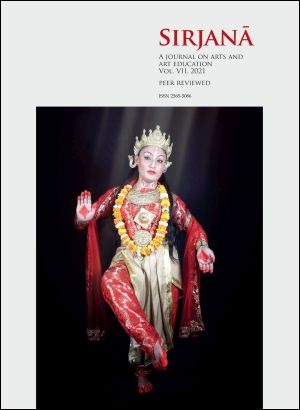Widening Sphere of Modern Art and Literature in Nepal: A study of the interface between them
DOI:
https://doi.org/10.3126/sirjana.v7i1.39340Keywords:
interface, Orientalist debate, modernism, native response, writers and painters, tesro aayaamAbstract
I see modernism in painting in this region as an evolutionary process that should trigger discussions about its constituent features. This argument harps on the two questions. Is modernism only an emulation of the Western style and methods in paintings and literature, or is it also the evolution of native cultural consciousness that is reflected in the experiments made by painters in art and by writers in creative literary works? To answer these questions, this article includes discussions about evolutions of modernism in paintings and culture in meta-artistic and literary discourses. Examples are drawn from very selective discussions about literature and works of art for reason of space. The basic argument of this article is that modernism in Nepali paintings should be seen in its evolutionary process. Modernism in art is not a condition that we see in palpable form today. It has grown over a long period of creative engagements and efforts both by painters and literary writers. Nepali art students' exposure to art education in Kolkata and literary writers' engagements with print-capitalism in Banaras over a century ago have played significant roles in introducing modernism in both paintings and literature. But I have said clearly that the use of the Western techniques and education has played great role in this process. We can see that in the interface between art and literature, which should be seen in the widening sphere of such sharing in terms of both techniques, and native orientations.




